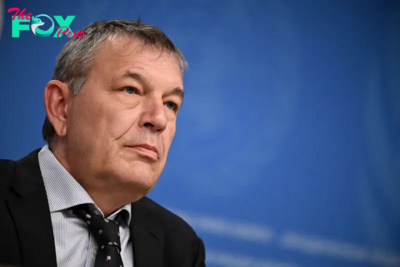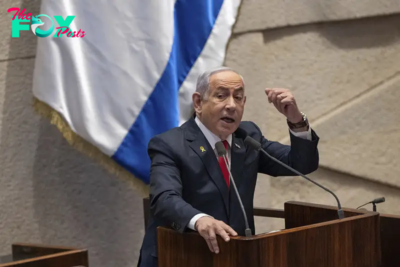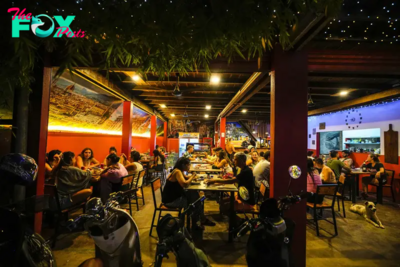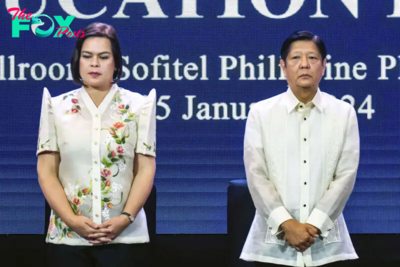World News
Why India’s Next Election Will Last 44 Days
India, the world’s most populous democracy, is set to hold its next general election over a seven-phase period that will last 44 days. On March 16, the Indian Election Commission announced that Indians will head to the polls between April 19 and June 1, with the results declared June 4.
Prime Minister Narendra Modi is seeking a third term in power after his party, the Bharatiya Janata Party or BJP, won a staggering 303 seats in the 2019 election. Recent findings from the “Mood of the Nation Poll” by India Today suggest that voters continue to see Modi as a popular leader (though such polls often have a mixed record for accuracy). To take on the BJP, India’s main opposition Congress party has formed a coalition bloc with more than two dozen other opposition parties called the Indian National Developmental Inclusive Alliance, or INDIA.
India’s elections are the largest democratic exercise in the world, with nearly 970 million registered voters—of which 470 million are women—turning out to cast a ballot. This year, 18 million first-time voters will also be eligible to cast a vote.
Read More: Why India’s Supreme Court Eliminated Anonymous Political Donations
The voter turnout in India’s elections is historically high—the last election held in 2019 drew a 67% turnout, according to the Election Commission, or ECI. (In comparison, the U.S. saw a 66% voter turnout in the 2022 presidential election.) India is also known for having the world’s most expensive election, with political parties spending more than $7 billion in 2019, compared to $6.5 billion spent in the U.S. during the 2016 election. That number is only expected to double in this year’s elections.
Under the country’s parliamentary system, the party that wins the majority of the 543 seats in the more powerful Lok Sabha, or the lower house of Parliament, forms a government and appoints its candidate as prime minister.
What is the schedule for the Indian election?
India holds its elections in sequential phases by regions carefully staggered by the ECI. The dates of polling announced by ECI across the seven phases will be April 19, April 26, May 7, May 13, May 20, May 25, and June 1. In some states like Bihar, West Bengal, and Uttar Pradesh, voting will take place on all seven days; in others, like Arunachal Pradesh and Sikkim, it will only take place on one day.
This election will be the second longest polling exercise in India’s electoral History, after the country’s first-ever election, which was held over a five-month period between September 1951 and February 1952.
Electoral rules also mandate that a polling station must be within 1.2 miles of every home, and nearly every vote is cast electronically. In 2019, 1.74 million electronic voting machines were used across more than 1 million polling stations. Nearly 15 million polling officials and security personnel will be tasked with manning polling stations during balloting. To reach every voter, they Travel to all parts of the country, including by trekking through glaciers in the Himalayas or wading through deep forested valleys in remote states like Arunachal Pradesh.
Why does India's election take so long?
The regional phases of India’s elections are determined based on how populated—as well as how contentious—the vote might be in each state. For example, the most densely populated state of Uttar Pradesh, which is also notorious for political intimidation and electoral iNFLuence, is broken up into seven phases.
The roving group of electoral and security personnel typically need time to get from one part of the country to another, especially in remote regions, to publicize and administer the vote, as well as protect the ballot boxes from getting stuffed or stolen. Sometimes, the ECI takes public holidays and religious festivals into account when extending the polling period.
All of the votes are then counted and announced on a single day, which means that no one—including the Prime Minister—knows who won any given seat until the results are announced.
Since India’s independence in 1947, the Indian Election Commission has determined that these elaborate structures allow for the slow and steady pace necessary to oversee free and fair elections in a country of nearly 1.4 billion people. But internal rifts, as well as criticism from opposition parties about insufficient action taken over the violation of rules, has seen the official electoral watchdog lose its storied reputation in recent years.
The election is coming at a time when India is grappling with the challenge of ensuring voter participation, free speech, and electoral independence while authoritarianism is on the rise. During Modi’s second term, Freedom House downgraded India’s democracy rating from “free” to “partly free” because of the government’s discriminatory policies against Muslims, as well as its targeting of critics and the media.
-

 World News6h ago
World News6h agoUNWRA Chief Philippe Lazzarini on the U.N. Agency’s Future in Gaza
-

 World News16h ago
World News16h agoBrazilian Police Indict Former President Bolsonaro for Alleged Attempted Coup
-

 World News1d ago
World News1d agoThe Future of Climate Action Is Trade Policy
-

 World News1d ago
World News1d agoWorld’s Best Brands – Brazil
-

 World News2d ago
World News2d agoWorld’s Best Brands – India
-

 World News2d ago
World News2d agoInternational Criminal Court Issues Arrest Warrants for Netanyahu and Hamas Commander
-

 World News2d ago
World News2d agoLandmark Bill to Ban Children From Social Media Introduced in Australia’s Parliament
-

 World News2d ago
World News2d agoAmerican and Australian Tourists Die in Laos After Drinking Tainted Alcohol

















